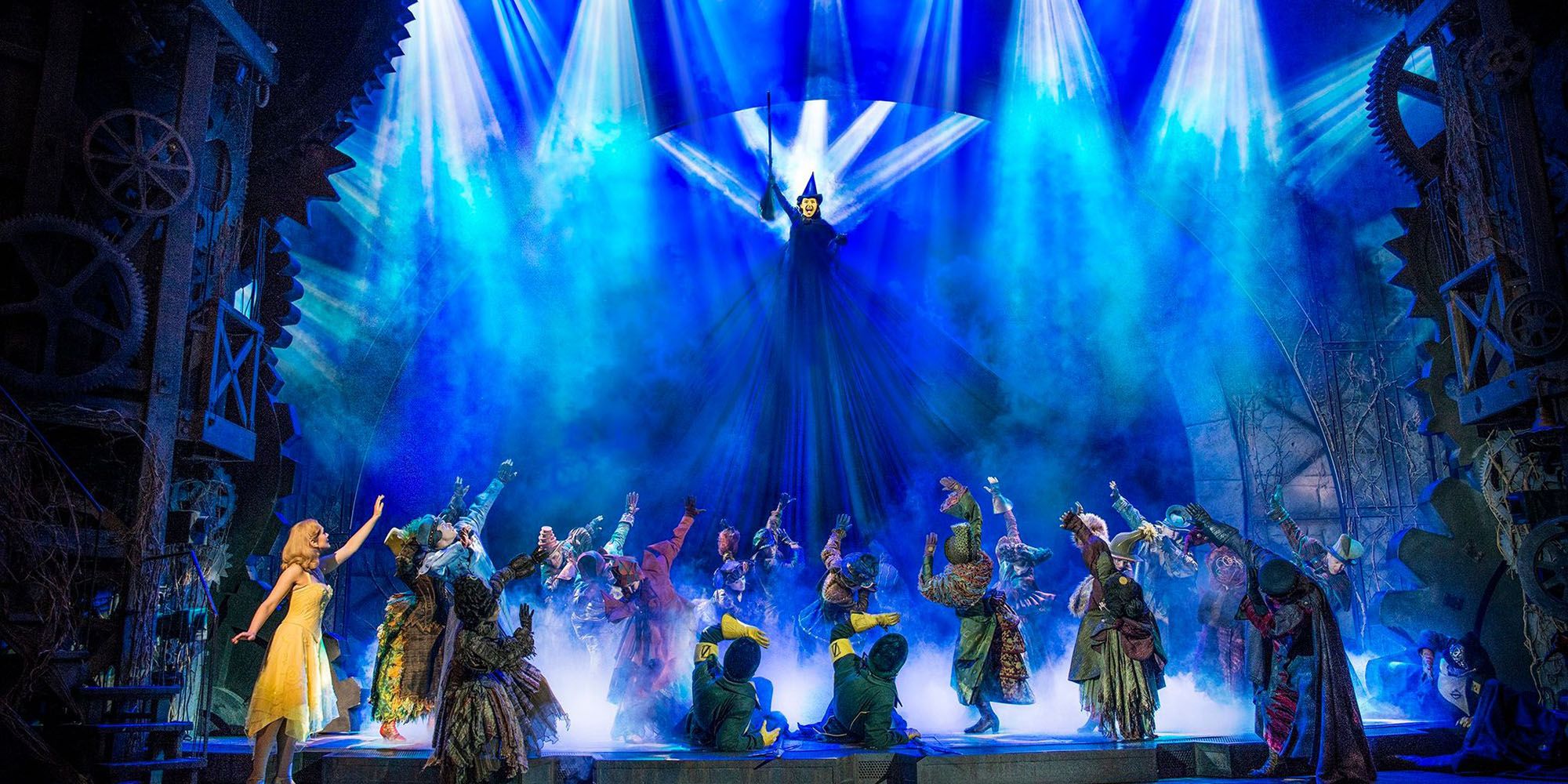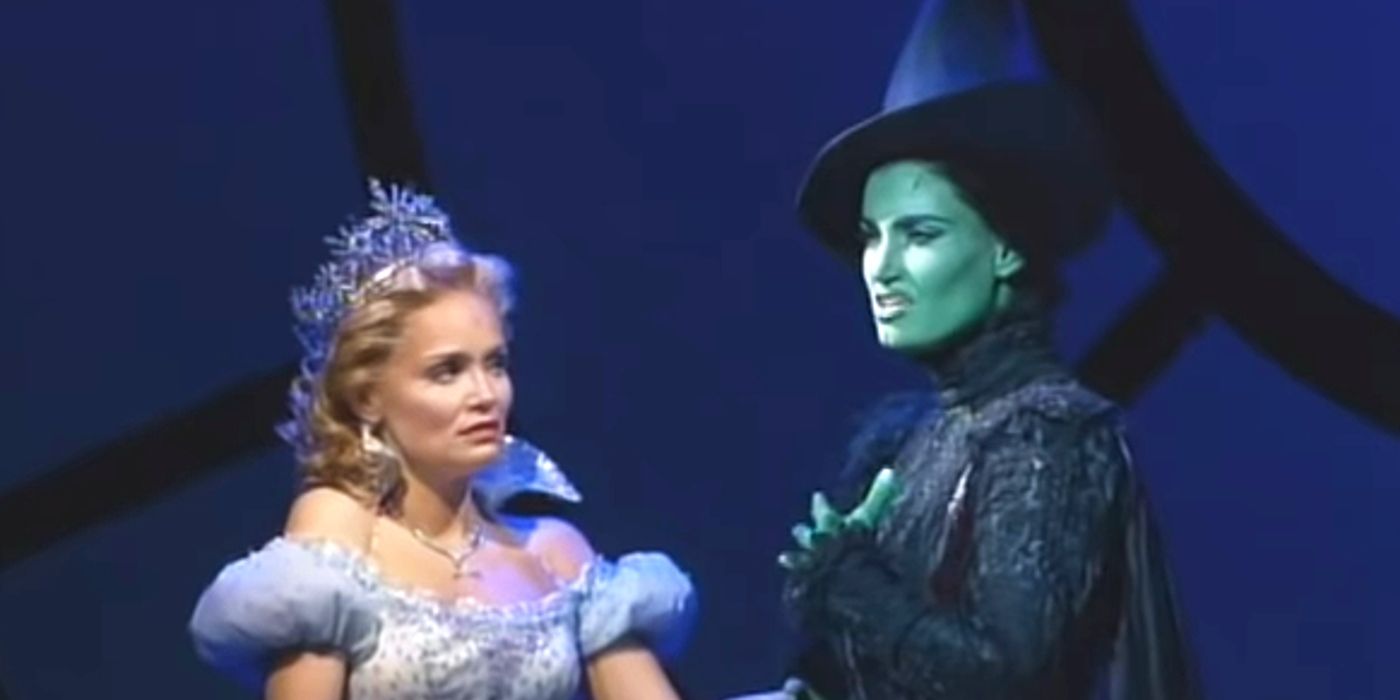Jon Chu’s decision to split his adaptation of the Wicked musical into two films is a revolutionary idea that comes with a major structural hurdle and problem to overcome. This will be the first movie adaptation of the stage production inspired by Gregory Maguire’s novel Wicked, rather than another take on L. Frank Baum’s novel The Wizard of Oz. Chu has already directed a movie adaptation of a stage musical—2021’s In the Heights—which could ease the minds of would-be critics. However, In the Heights was a single film. Creating a two-part adaptation for Wicked will come with a hefty challenge.
When it comes to stage play adaptations, the most complicated part for screenplay writers and composers is condensing the two-act structure into one film. Each act’s plot has its own beginning, middle, and end, so trimming songs, side arcs, and even characters always means the film is at risk of losing the story’s heart. Jon Chu turning his Wicked adaptation into a duology seems like an embarrassingly obvious solution.
What makes Wicked tricky, however, is that its story exists within a frame: Glinda the Good Witch and the citizens of Oz celebrating the death of Elphaba, the Wicked Witch, in the opening song “No One Mourns the Wicked.” Even trickier, the musical never pauses at any point to return to the frame. Instead, once the story enters the past, it runs chronologically all the way to Elphaba’s death. So, the finale brings audiences back to the moment of the opening scene. Without an existing interstitial that returns to the frame, splitting the adaptation isn’t a matter of just giving each act its own movie.
What makes the end of the Wicked musical’s first act so memorable is the villain (or heroine) song “Defying Gravity.” In the stage production, it ends with Elphaba dramatically lifting into the air as the Ozians look up in awe and fear. It’s incredibly cinematic, making it the perfect vibe for ending Jon Chu's film. However, because the second act’s opener, “Thank Goodness,” picks up right after that, audiences may forget the frame story setup entirely by the time the second film comes out. Leaving the frame story unaddressed by the first film’s end would be a major faux pas—a Chekov’s gun error of a film structure.
Musical audiences could point back to Chu’s other musical adaptation as a reference for Wicked’s potential success. The In the Heights film includes the frame of protagonist Usnavi recounting one special summer from his youth—something that’s not in the original. But the screenplay writer was Quiara Alegría Hudes, who wrote the stage production with creator Lin-Manuel Miranda. Author Gregory Maguire is co-writing the Wicked film’s screenplay, but he had nothing to do with the stage production’s development. While the original composer, Steven Schwartz, is also writing the music for the film, that doesn’t guarantee a straightforward solution for maintaining the important framing device.
If Jon Chu wants to honor the legacy of the Wicked musical, creating a two-part adaptation is a Catch-22. Keeping as many songs and characters as possible will please those who love the musical stage production, but it could come at the cost of a natural stopping point for the first film. To succeed, Chu and his creative team will have to be very intentional about the adaptation’s structure to achieve both faithfulness and cohesion.


